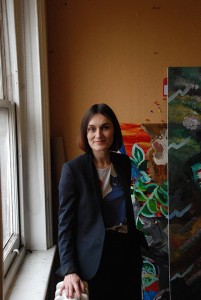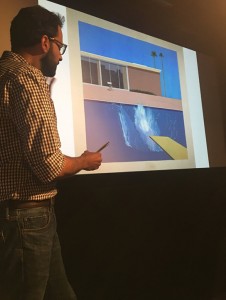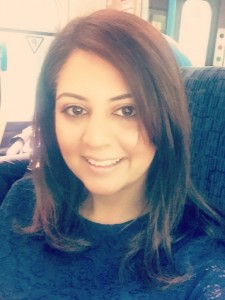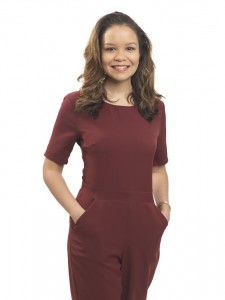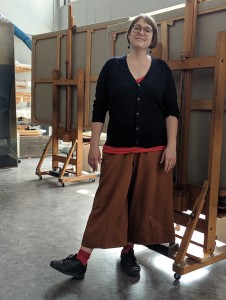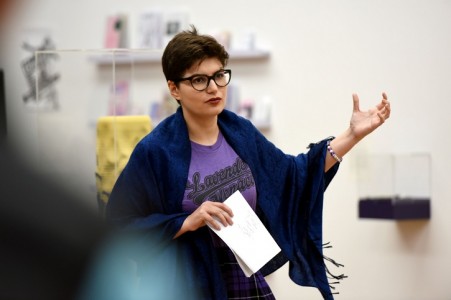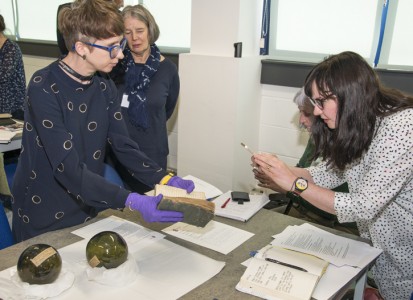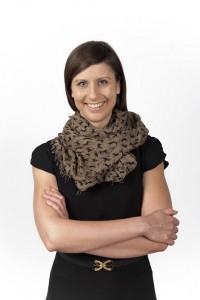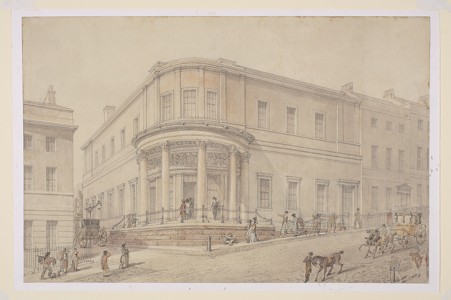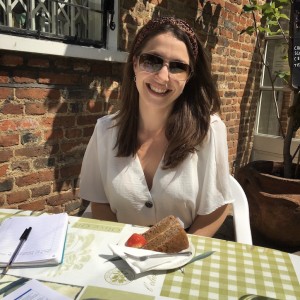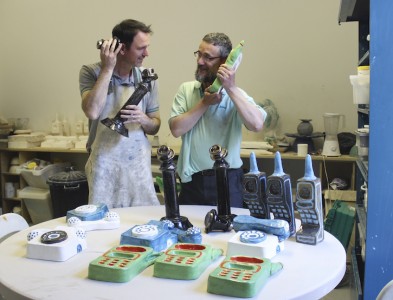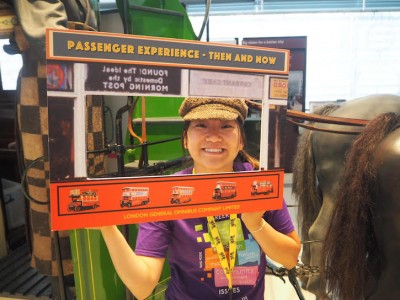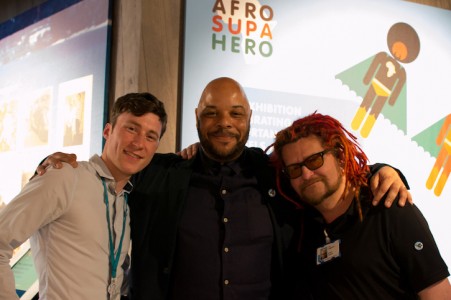For Art UK's 'Being...' series, we take a look at a day in the life of a professional working in the arts, heritage or museum sector.
Faye at work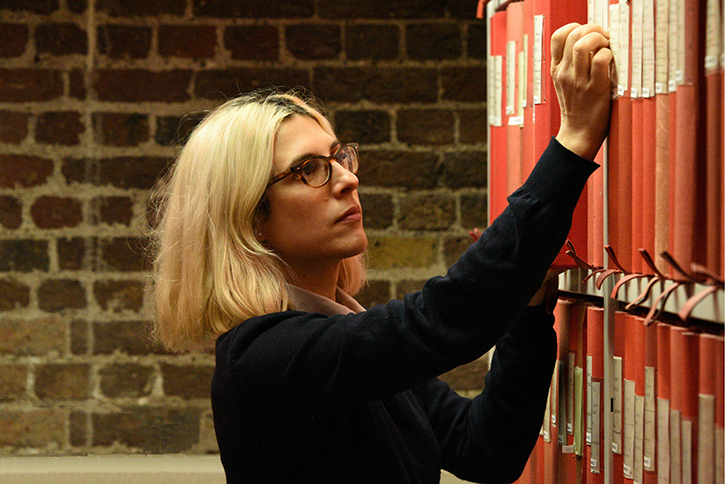
What's your role?
I am the Digitisation, Database, and Cataloguing Manager at the Courtauld Institute of Art. Digitising the photographic libraries with complete volunteer involvement is an ambitious part of Courtauld Connects, the multi-million-pound project to transform and renovate the gallery and institute's home at Somerset House. Joining the project at the beginning of the pilot was a wonderful opportunity, as I got to develop the digitisation workflow and volunteer activities from scratch; since then, we have trained over 800 volunteers and made just as many friends.

The idea behind our volunteering activities is to open our photographic libraries to absolutely anyone interested in learning new skills and help us deliver over a million images online with as open a license as possible. Some of our volunteers are interested in architecture and photography, others are interested in digitisation and library studies; some want to socialise and do something different with their time, while others are building skills for further education or new employment. We know that institutions like the Courtauld can be intimidating, even if we require no minimum commitment and no prior skills or knowledge, so we try to make the first move in seeking collaborations with charities like the Terrence Higgins Trust or MyAFK, to welcome those who might need help building their confidence. A lot of effort goes into continuously improving our instructions and training so that anyone can join and make a difference with their contribution from their very first day.
What's your morning routine?
My alarm goes off at 6.50am and is promptly snoozed at least once. The second alarm turns on the news and gets me out of bed. I get porridge and coffee ready and wake up my four-year-old. My partner might or might not be there as they work at the hospital and their schedule varies. Getting out of the house as quickly as possible while keeping a relaxed atmosphere for my daughter is an art that I am sure I'll keep refining and a skill I can transfer to work, considering that as well as our digitisation volunteers we often manage visiting students doing micro-internships (32 last year) and dozens of corporate partners on taster shifts.
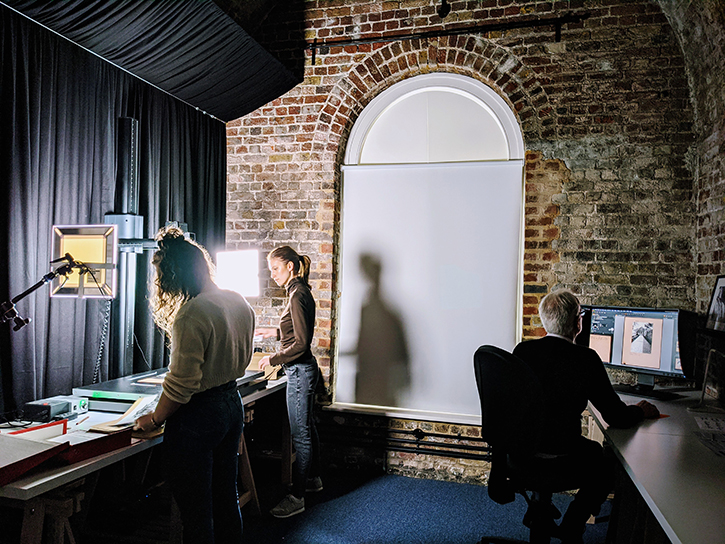
What's your journey to work like?
I cycle from Clapton Pond, Hackney, hit school drop-off at 8.30am and arrive at Somerset House at about 9am. Cycling is the fastest and most relaxing way to travel, it gives me a chance to properly wake up, doesn't cost a penny, is good for the planet and provides free exercise. It also means I can admire the seasons on my leafy route and listen to audiobooks (I take back routes!).
What's a typical morning at work for you?
I set up the cameras in the two digitisation studios and get the photos or negatives ready. We run two to three shifts every day and always welcome new volunteers, so both mornings and afternoons begin with training. I get everyone started on their chosen tasks for the day: digitisation, accessions, transcription or metadata, and sometimes I spend the rest of the morning answering questions and troubleshooting. We can have up to 18 volunteers per shift every day, every folder of images is different and the volunteers take their tasks very seriously so there is plenty to discuss.
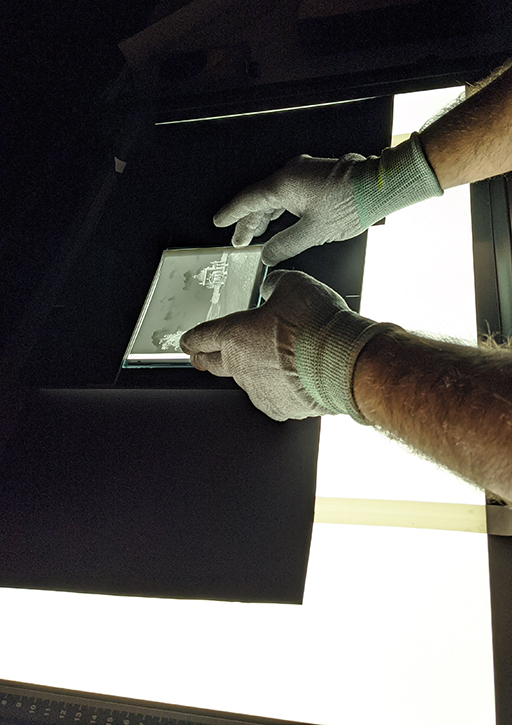
What's for lunch?
I wish I could say I always made packed lunch. In reality, it's whatever vegan option I can get my hands on near Somerset House. The time between morning and afternoon shifts is also when I quality-check and process the morning sessions and set up for the afternoon.
What's a typical afternoon like?
When I'm not helping Heidi solve a metadata conundrum, William rename a hundred images, Muny decipher the name of a photographer scribbled at the back of an item, or any other volunteer carry out their tasks with amazing passion, I might be editing posts for our blog, fetching photographs for the volunteer film team or Instagramming the incredible details our 100MP camera can reveal. Sometimes the afternoons are when the most exciting activities take place: getting an exhibition ready, making collages with our friends at BeyondAutism, hosting an event with the public programs department, going with the volunteers to visit another institution's digitisation studios, doing some research or organising a picnic.
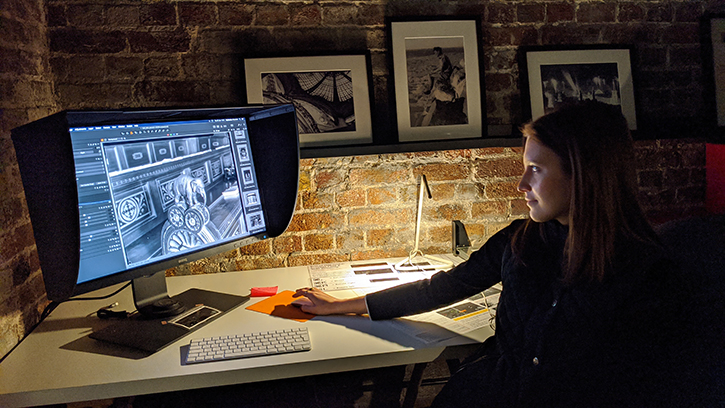
What do you do after work?
Sometimes we have evening shifts for those volunteers who aren't able to participate during office hours, or events to showcase the collection. Other than that, I mostly leave at the speed of light to pick up my daughter, we play, sing, dance, cook, eat, have a bath and read some books. After she's asleep, I either watch something or knit/sew/build something, or both simultaneously. Then it's Shavasana (the best bit of yoga) and sleep.
Faye Fornasier, Digitisation, Database, and Cataloguing Manager, Courtauld Institute of Art
Do you work in the arts, heritage or museum sector? Would you be kind enough to share an example of your working day for our 'Being...' series? Please get in touch with Art UK at pitches@artuk.org as we'd love to hear from you.

